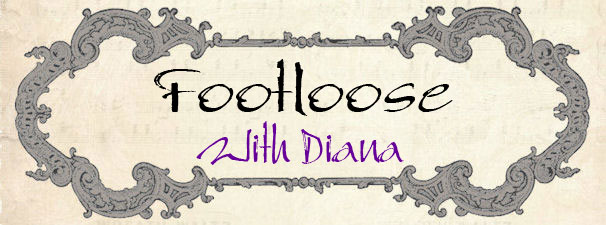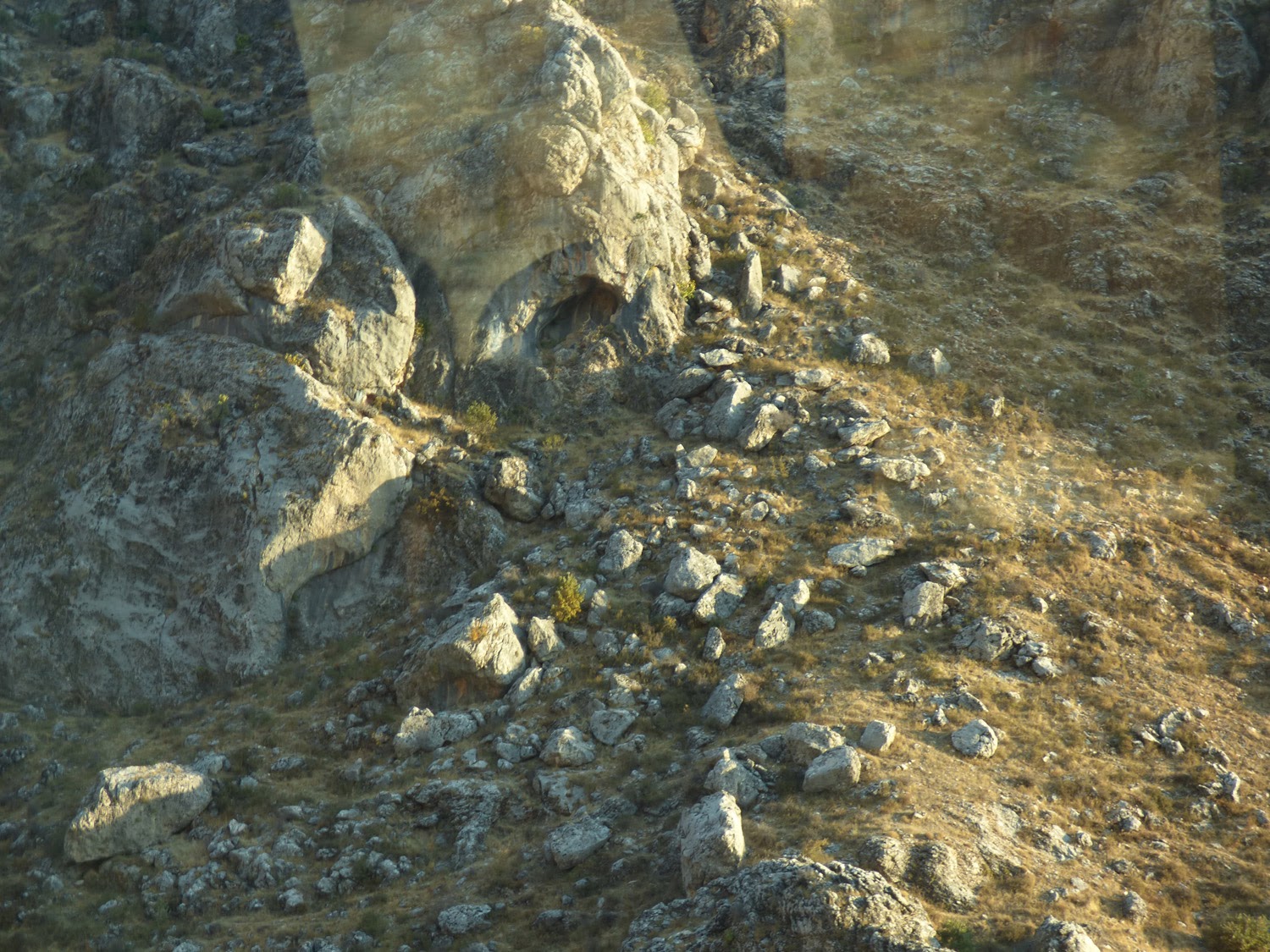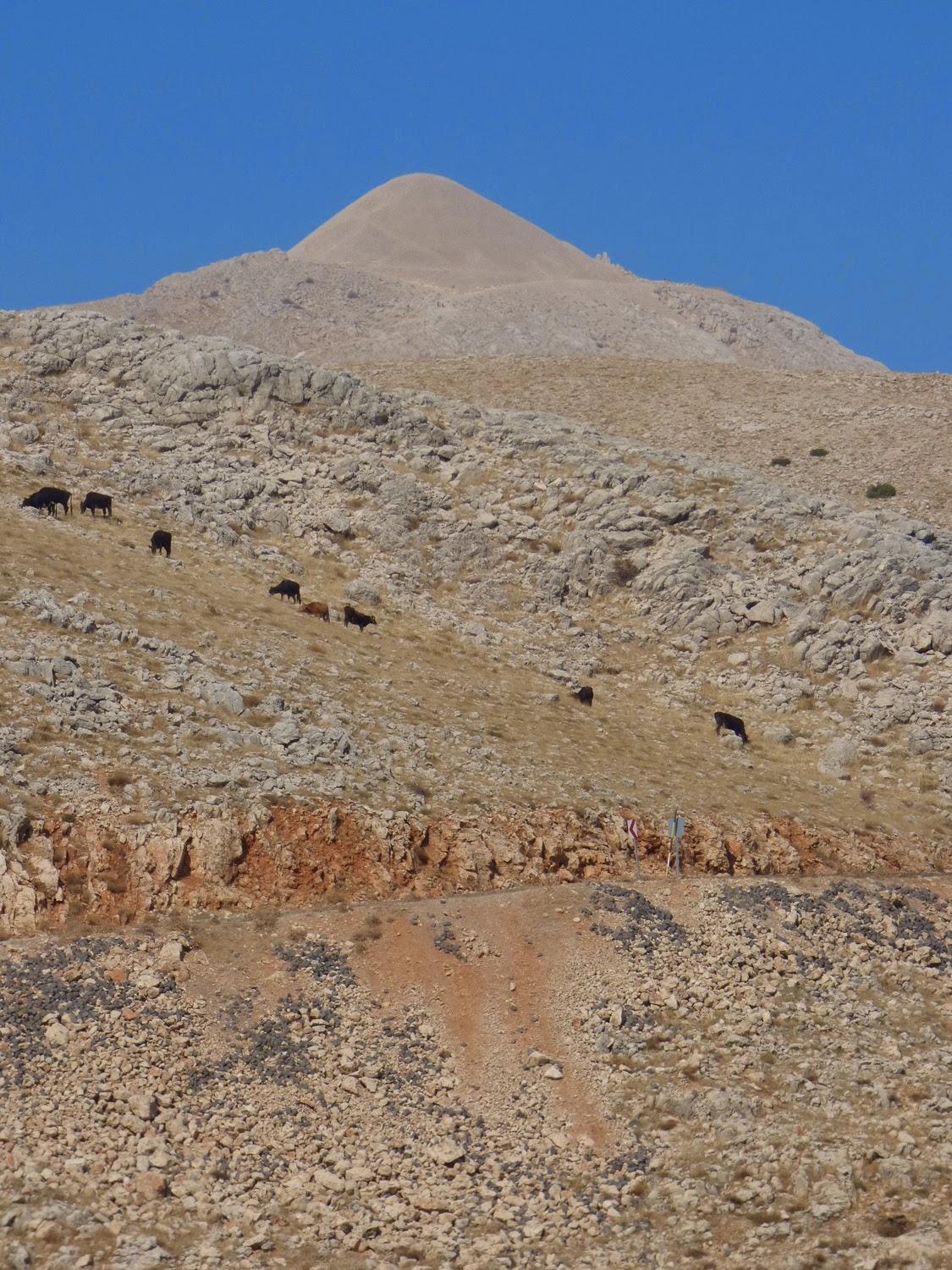The reason, however, that we were in Şanlıurfa, was that it's the base for traveling to Mt. Nemrut, a 7000-foot mountain whose summit is the site of an elaborate 1st-century BC burial mound flanked by amazing statuary. In 62 BC, King Antiochus I (son of Mithridates, and claimed descent from Darius through his father and Alexander the Great through his mother - modest, eh?) of the short-lived kingdom of Commagene built this astonishing memorial to himself and an assortment of gods, to cover all the bets. We traveled for four hours through pretty rough country to get there:
You can see the burial mound, which is a pyramid of broken stones on top of the tallest mountain in the region, from great distances, given that it's so even compared to the rest of the landscape:
The main lure of climbing the mountain is the monumental statues around the burial mound. These massive heads used to be part of the figures on the thrones behind them, but were dislodged by earthquakes or iconoclastic vandalism:
There is quite a lot of self-laudatory text on the reverse of the thrones, but one is not allowed to climb up to see it any longer.
There's also a large platform on this eastern side of the mound, formerly the base of a pillared temple:
This side of the mountain gets the brunt of the endless wind, so the statues are in worse shape than on the west side. This represents the god(s) Apollo/Mithras:
And this is Herakles (Hercules):
Obligatory photo of self in front of the main attraction:
Around on the west side, things are in slightly better shape, but there doesn't seem to be any attempt to consolidate and protect these pieces from further climatological damage. They are subject to constant winds and extremes of temperature (it's under snow half the year); it's really quite amazing that 2000+ years later they're in as good shape as they are. This is King Antiochus I himself:

The Commagene kingdom was one of many established after the Selucid empire was defeated by the Romans in 190 BC. The wide range of cultures encompassed by the kingdom called for the inclusion of both Greek and Persian dieties to cover all the bases, hence double-barreled names for some of these statues. A Commagene diety - who also serves as the Greco-Roman goddess Tyche:
An eagle:
This head represents Zeus/Oromastes:
In addition to the no-longer-enthroned figures, there are quite a few carvings on flat stones:
The poor lion has been separated from the rest of his body, as has the eagle head which sat atop his feathered neighbor to the right:
The Turkish government has built paved walkways and stairs to get tourists up and down from the parking lot at the mountain's summit. We had a lot of haze the day we were there, but you can still get a glimpse of the Euphrates River glinting below in the distance on our descent:
You can see the burial mound, which is a pyramid of broken stones on top of the tallest mountain in the region, from great distances, given that it's so even compared to the rest of the landscape:
The main lure of climbing the mountain is the monumental statues around the burial mound. These massive heads used to be part of the figures on the thrones behind them, but were dislodged by earthquakes or iconoclastic vandalism:
There is quite a lot of self-laudatory text on the reverse of the thrones, but one is not allowed to climb up to see it any longer.
There's also a large platform on this eastern side of the mound, formerly the base of a pillared temple:
This side of the mountain gets the brunt of the endless wind, so the statues are in worse shape than on the west side. This represents the god(s) Apollo/Mithras:
And this is Herakles (Hercules):
Obligatory photo of self in front of the main attraction:
Around on the west side, things are in slightly better shape, but there doesn't seem to be any attempt to consolidate and protect these pieces from further climatological damage. They are subject to constant winds and extremes of temperature (it's under snow half the year); it's really quite amazing that 2000+ years later they're in as good shape as they are. This is King Antiochus I himself:

The Commagene kingdom was one of many established after the Selucid empire was defeated by the Romans in 190 BC. The wide range of cultures encompassed by the kingdom called for the inclusion of both Greek and Persian dieties to cover all the bases, hence double-barreled names for some of these statues. A Commagene diety - who also serves as the Greco-Roman goddess Tyche:
An eagle:
This head represents Zeus/Oromastes:
In addition to the no-longer-enthroned figures, there are quite a few carvings on flat stones:
The poor lion has been separated from the rest of his body, as has the eagle head which sat atop his feathered neighbor to the right:
The Turkish government has built paved walkways and stairs to get tourists up and down from the parking lot at the mountain's summit. We had a lot of haze the day we were there, but you can still get a glimpse of the Euphrates River glinting below in the distance on our descent:



















No comments:
Post a Comment